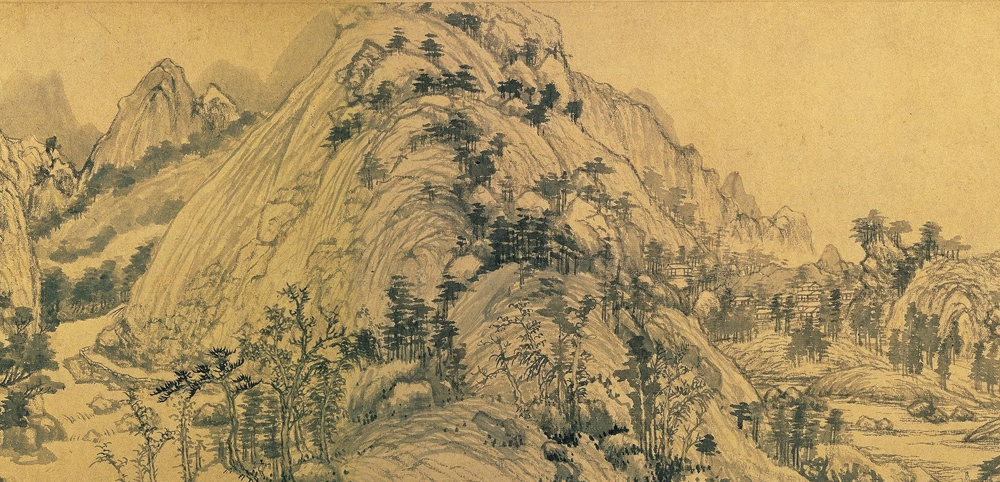Top 10 Chinese paintings (II): Dwelling in the Fuchun Mountains

The Master Wuyong Scroll of Dwelling in the Fuchun Mountains at the “National Palace Museum” in Taipei
Dwelling in the Fuchun Mountains is considered one of the greatest masterpieces by Chinese painter Huang Gongwang (1269-1354), regarded one of the “Four Masters of the Yuan Dynasty” (1206-1368). Huang is also revered as a master of wenrenhua (literati painting) who made great contributions to China’s shanshui (mountains and waters) artistic genre.
Huang began working on Dwelling in the Fuchun Mountains in 1347 after moving to the Fuchun Mountains, where he began serious studies in painting at the age of 50. The painting was completed in 1350, after which it was dedicated to the Taoist priest Wuyong as a gift.
The Fuchun Mountains are located southwest of modern day Hangzhou, Zhejiang Province, along the northern bank of the Fuchun River. Huang’s painting depicts the beauty of Fuchun River in early autumn. Beginning with a vast expanse of river scenery from the right, the painting moves on to the mountains and hills. It then goes back to the river and marshes before featuring a conical peak. Finally, the landscape fades into the distant ink-washed hills over water. The painting is typical of shanshui painting in the Yuan Dynasty, employing mountains, forests and other features of nature to express the painter’s emotions.
Art collector Wu Hongyu acquired the painting during the last years of the Ming Dynasty (1368-1644). He instructed his family to burn the painting after he died so he could cherish it in the afterlife. Fortunately, his nephew Wu Jing’an salvaged the painting while it was aflame and torn in two. In 1652, the ninth year of the Shunzhi Emperor’s (reigned 1644-1661) reign, Wu Jigu, a descendant of Wu Hongyu, pieced the damaged painting together and had it mounted.
The first half of the painting, subsequently known as The Remaining Mountain, measures 51.4 centimeters in length. After passing through the hands of numerous collectors, it finally settled in the Zhejiang Provincial Museum in Hangzhou in 1956 and was named as one of the museum’s 10 treasures.
The second half, known as The Master Wuyong Scroll, measure 6.37 meters long. It was sold to the imperial palace during the Qianlong Emperor’s (reigned 1736-1795) reign, passing through the hands of several high-level government officials, including Gao Shiqi and Wang Hongxu, before returning to the Palace Museum after the Qing Dynasty (1616-1911). It was then taken to Taiwan in 1949, and is now at the “National Palace Museum” in Taipei.
Before the palace received The Master Wuyong Scroll, it housed another work by Huang, The Ziming Scroll. The Qianlong Emperor verified the scroll by examining the inscriptions as well as the brush technique before proclaiming it as authentic and judging the new acquisition was counterfeit. This mistake was corrected in 1816, during the reign of the Jiaqing Emperor (reigned 1796-1820).
From June to September 2011, the two parts of the original painting, The Master Wuyong Scroll and The Remaining Mountain, were jointly exhibited for the first time at the “National Palace Museum” in Taipei.
